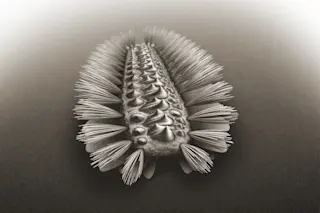Spotting any similarities between the brachiopods, the bryozoans and the phoronids may seem impossible. These sea creatures do all live sedentary lifestyles — attaching themselves to rocks and reefs along the ocean floor. But what characteristics could the clam-like, hard-shelled brachiopods possibly share with animals that resemble frilly aquatic plants?
Scientists say that the answer lies in these animals’ ancestry. According to recent research in Current Biology, all living brachiopods, bryozoans and phoronids may trace their lineage back to a single species — an ancient, armored worm known as Wufengella.
"When it first became clear to me what this fossil was that I was looking at under the microscope, I couldn’t believe my eyes. This is a fossil that we have often speculated about and hoped we would one day lay eyes on," says Luke Parry, a study author and paleobiologist at the University of Oxford, according to a press ...















